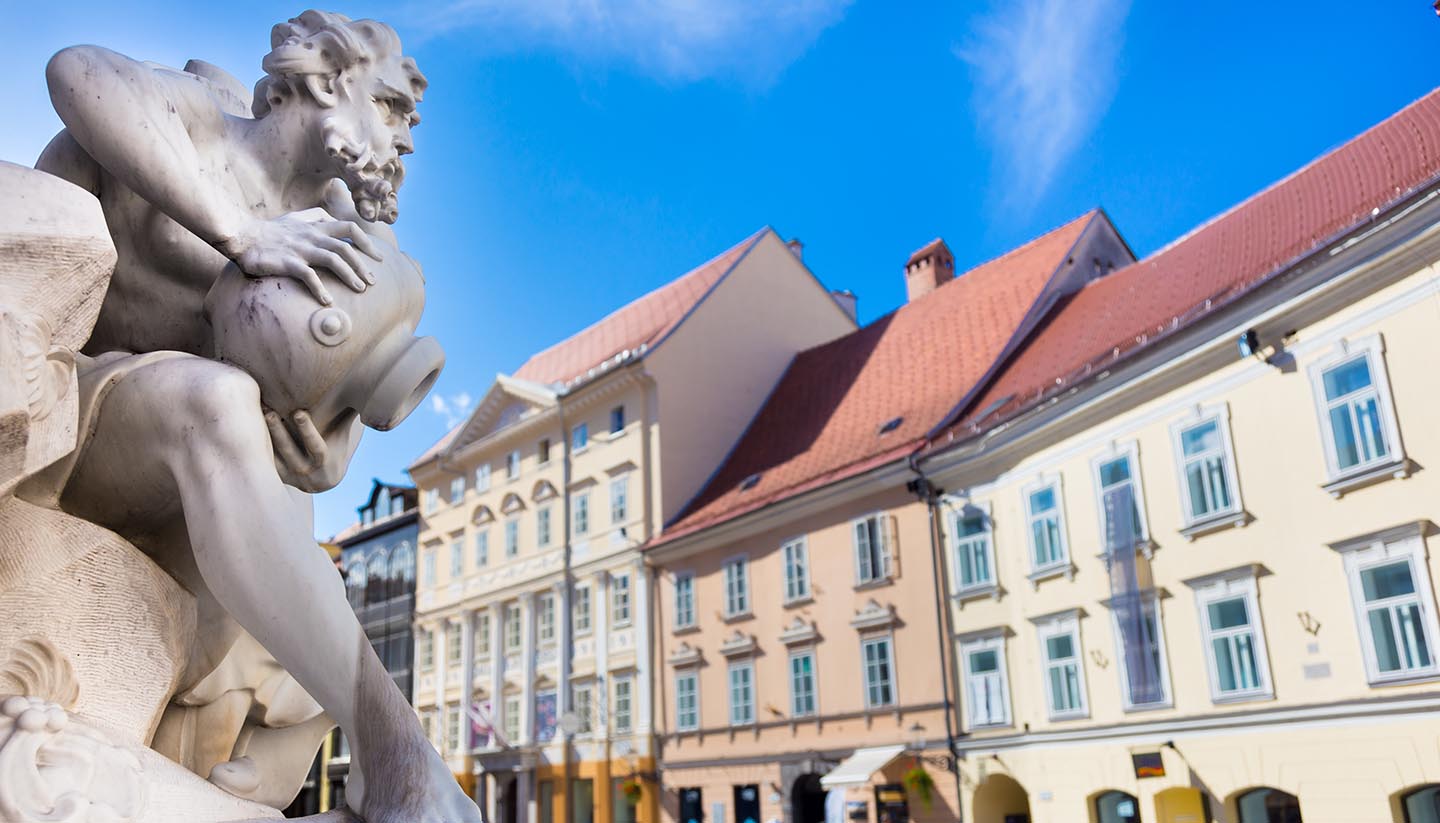Ljubljana History
According to legend, Ljubljana’s beginnings are intertwined with Jason and the Argonauts. On returning from a quest for the Golden Fleece, the heroes met a dragon by a lake, which their leader Jason slew. The dragon has since been adopted on the city’s coat of arms.
In prehistory, a resourceful lake-dwelling people inhabited the Ljubljana Marshes, driving piles into the lakebed and living atop on wooden houses. Later, the Veneti tribe settled the area, followed by the Illyrians. By the 3rd century BCE, the Celtic Taurisci tribe resided in Ljubljana.
The Roman settlement of Emona came in the 1st century BCE, which played a vital role in countless wars. It was thus heavily fortified and had a population of more than 5,000 people. Emona was relatively developed, with brick houses and paved streets.
The decline of Rome saw Attila the Hun arrive in 452CE. Slovenia’s Slav ancestors followed in their wake and built a new settlement at the turn of the 6th century. By the 9th century, Ljubljana had grown into a town subject to Hungarian raids, but its real development came in the 13th century when it was granted city rights. With this independence, five town gateways were built, craft guilds organised, and Ljubljana coined its own money.
After an earthquake in the early 16th century, the rebuilding of the city was greatly influenced by the Renaissance. By the end of the century, the Jesuits had begun their mission to convert the locals from Protestantism to Catholicism. In the 17th century, Ljubljana refashioned once more, this time along baroque lines.
In the early 19th century, Napoleon occupied Ljubljana before the city passed into Austrian hands for the remainder of the century. Although it avoided any serious harm in WWI, it became part of the Kingdom of Serbs, Croats and Slovenes in the aftermath. A cultural centre of the new entity, Ljubljana gained a university and National Gallery.
Fascist forces occupied the city during WWII, after which Slovenia became part of Yugoslavia. Slovenia declared independence in 1991, with Ljubljana as its capital.
Did you know?
• Throughout the 19th century, under Austrian rule, Ljubljana benefited from new railway links, with the first train connecting it to Vienna in 1849.
• Responding to resistance from locals, Mussolini’s occupying forces surrounded Ljubljana in a barbed-wire fence.
• It is thought that on the arrival of the Jesuits during the Counter-Reformation in 1597, less than 5% of Ljubljana’s population was Catholic.


